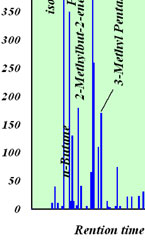Low carbon fuels
 Today, we are told, is the beginning of the Low Carbon Age. The Stone Age, the Bronze Age and the Iron Age have come and gone while the Fossil Fuel Age, if you believe many of the pundits, is slowly to be phased out. Ahead of us, or so it would appear, lies the future of maintenance-free electric motors and expensive failing batteries. Setting aside the practicalities of how we actually generate this low carbon electricity, I would just like to point out that even as I write there is one fuel that is low carbon, has a higher calorific value than gasoline / diesel and is literally ‘on tap’ in the vast majority of homes in the western world. The fuel I refer to is natural gas.
Today, we are told, is the beginning of the Low Carbon Age. The Stone Age, the Bronze Age and the Iron Age have come and gone while the Fossil Fuel Age, if you believe many of the pundits, is slowly to be phased out. Ahead of us, or so it would appear, lies the future of maintenance-free electric motors and expensive failing batteries. Setting aside the practicalities of how we actually generate this low carbon electricity, I would just like to point out that even as I write there is one fuel that is low carbon, has a higher calorific value than gasoline / diesel and is literally ‘on tap’ in the vast majority of homes in the western world. The fuel I refer to is natural gas.
After coal, it will surprise many to hear that natural gas is the most abundant fuel around with almost twice as much proven reserves to that of crude oil. With a Lower Calorific Value (LCV) of around 47 MJ/kg (compared with gasoline at 43 MJ/kg) and an octane (RON) rating much nearer 130, it has always surprised me that the fuel hasn’t been taken seriously as a possible high performance fuel. The news that motor sports diesel pioneers VW/Audi, entered two of its CNG-powered Sciroccos in this years Nurburgring 24 hr with one car coming home 17th overall and first in the AT (alternative powertrain) class, is finally making people sit up and take notice. While the actual fuel used was HCNG, a mixture of hydrogen and compressed natural gas, the project nevertheless and at long last demonstrated the potential of this otherwise underrated utility.
If we assume that natural gas consists of predominately methane with small amounts of the higher ‘saturated’ alkanes (ethane, propane, butane, etc.) together with an even smaller amount of inerts (principally nitrogen) then the number of hydrogen atoms to every carbon will approximate to four. Comparing this to an average carbon to hydrogen ratio of gasoline of C1H1.78 and a few further calculations will prove that natural gas (or for the purposes of this calculation - 100% methane) will produce about 19-20% less carbon dioxide per kilogram of fuel compared with most gasoline fuels. At a time when most other methods to reduce gasoline consumption (and hence carbon) struggle to achieve only small savings, you will begin to see the validity of the cause.
However, life is never that simple or easy and while most gasoline engines can be run on natural gas with a few modifications, there is a fundamental objection to using the fuel in an internal combustion engine. Gasoline engines are generally optimised to run on a particular grade of fuel. Be that ULG95 for road transport or 102RON for competition, the compression ratio and combustion system will be fully optimised to ensure efficient and repeatable combustion for that fuel chosen. While the quality of these liquid fuels will be blended to consistent levels of octane, for natural gas coming from a gas utility company through the mains gas supply, the requirements are different. Customers for this type of fuel are more interested in their energy or heating value than in its detonation characteristics and in this case the control factor is that of the Wobbe Index and not octane number. Defined as the volumetric heating value of the gas divided by the square root of its specific gravity, this index is proportional to the heating value of the quantity of gas that will flow through an orifice in response to a given pressure drop. Thus to ensure a constant calorific value in response to fluctuations in composition, propane or other alkanes may have to be added to maintain the heating value of the mixture. Since the Motor octane of methane is very high (around 122) but that of propane is only 96( butane 89 and ethane 101), with the variability of the gas, maintaining the Wobbe number at a given value will invariably lead to wide changes in octane value, which would be unacceptable from an engine calibration perspective. This shouldn’t stop us from using the fuel but simply highlights some of its limitations.
Low carbon fuels? Been using them for years.
Written by John Coxon.